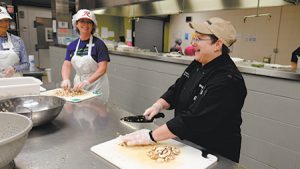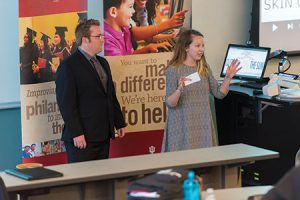
Most adults in the US give to charity. Here’s where they donated.
The results of a new poll suggest most Americans gave at least a little to some charities in the past year but offer mixed signals for those hoping to improve giving trends.

The results of a new poll suggest most Americans gave at least a little to some charities in the past year but offer mixed signals for those hoping to improve giving trends.
After years of declines, Americans’ trust in civil-rights and community-action charities increased in 2020, according to a new study, which also found that trust in charities overall held steady.
The research found that giving to public-society benefit organizations had the largest growth in 2020, increasing 15.7%.
Giving by businesses increased by 11.4% from 2018 to 2019, once adjusted for inflation. Giving by foundations reached a record high of $75.7 billion.
Growth in charitable giving in the United States slowed in 2018, possibly as a result of the 2017 tax reform bill, according to an annual report that tracks American giving patterns. But the decline wasn’t as big as many predicted.
A surging stock market and huge gifts from billionaires fueled a big increase in giving in 2017, according to the annual Giving USA report by the Indiana University Lilly Family School of Philanthropy at IUPUI.

Some local entities have increased their attention on retaining existing staff, encouraging volunteers to move into paid positions and expanding their searches when jobs become available by targeting recent graduates or community clubs or schools.

The Indiana University Lilly Family School of Philanthropy is in the midst of practicing one of the skills it teaches—fundraising for a capital campaign&mdash.
The 2016 graduating class includes 66 students earning doctorate, masters and bachelors degrees as well as graduate certificates in philanthropic studies.
The funds will go toward a three-year project at the Women’s Philanthropy Institute that will focus on the factors that influence men and women to make charitable donations.
Indiana residents ranked 17th in rate of giving in the study by the Chronicle of Philanthropy, donating $32.60 for every $1,000 they earned in 2012. That was up from $31.70 in 2006.
Indiana University has found a successor to Gene Tempel, who is set to step down as dean of the IU Lilly Family School of Philanthropy at IUPUI. The position will be funded through the newly created Eugene R. Tempel Deanship.
Charitable giving in the United States continues to recover from its recession-induced slump, reaching an estimated $335.2 billion last year, a new study concludes.
Cynthia Simon Skjodt, the daughter of late shopping mall magnate Melvin Simon, is donating $1.5 million to the Indiana University Lilly Family School of Philanthropy in honor of her father, the school announced Wednesday morning.
Americans gave an estimated $316.2 billion to charity last year, continuing a string of small philanthropic gains. What cause got the bulk of the bounty?
IUPUI economics professor Richard Steinberg stands by his philanthropic theory, despite seeing his fundraising principles speared by a charity watchdog group and then by a cable news network. At issue is his belief that charities are justified in spending heavily on fundraising, because doing so positions them for long-term success.
A long-discussed School of Philanthropy at IUPUI is one step away from becoming a reality. The Indiana University Board of Trustees was expected to vote Friday on whether to create the school, which would be the first of its kind.
Charitable giving grew 4 percent nationally in 2011, but the increase was less than 1 percent after adjusting for inflation, according to a report released Tuesday by the Giving USA Foundation and The Center on Philanthropy at Indiana University.
Only 36 percent correctly answered all three assessment questions on a test.
Researchers say the study was the first to examine return-on-investment from donating merchandize vs. liquidating or destroying it.